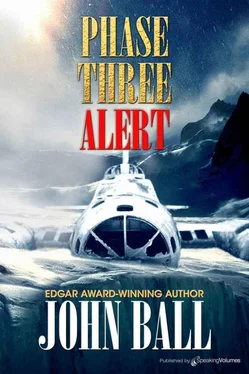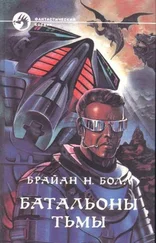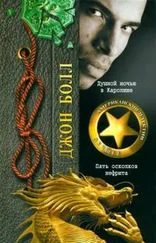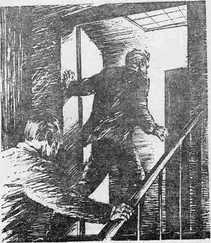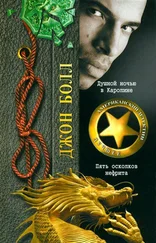“Full tanks and ready to go,” Ferguson answered. “Andy Holcomb is making the final pre-flight; he’ll be through any minute.”
“Are there any checklists?”
“Yes, sir. We prepared a full set; you’ll find them on cards right there.” He pointed.
Ferguson looked out and saw Holcomb standing motionless, in front of the nose and a little to the left. Suddenly his whole world became the B-17 and he wanted to fly her more than any aircraft that had ever been launched.
“Pre-engine-start checklist,” he ordered.
In response Colonel Kleckner began to read off the neatly typed items, Ferguson responding to each one.
“Checklist complete,” the colonel said.
Ferguson showed Holcomb a thumbs-up sign through the windshield. In response the flight engineer looked quickly each way, then he whirled a hand in the “start-engines” signal. As he was replaced by Sergeant Feinberg, he ran around the wing, well out of range of the propellers, and climbed up the crew ladder. Moments later the first of the four piston engines barked into action. When it had blown back its thick burst of smoke and then settled down, Ferguson started number two. The power plant caught quickly and evenly.
Number three joined its voice to the mounting chorus. He started number four and the Penguin vibrated with life. “Pre-taxi checklist,” he directed.
The colonel read off the few items and then said, “Checklist complete.”
Ferguson fitted on his modern headset, adjusted the microphone in front of his lips, and called ground control. “Air Force three-six-zero, ready to taxi,” he reported.
“Air Force three-six-zero, follow the Here, please.”
Ferguson chafed, but the instruction was right and he knew it; the C-130 would climb out at more than twice the speed of the B-17 and the big, turbine-powered airlifter had no need to run up and check the mags, propeller controls, and all that. He bent over to verify the mixture on number three and when he looked up again, one of the HH-3’s was taxiing past. Since it wouldn’t have to fly the pattern at all, it would probably be the first aircraft off the ground.
On the airframe a door opened for a few seconds and then closed. Ferguson pressed the intercom. “What was that?” he asked.
Stovers answered in a surprisingly crisp manner for him. “Sergeant Feinberg coming aboard, sir.”
“Negative,” Ferguson said. “No riders.”
He expected Stovers to respond to that, but he didn’t. A few seconds later Sergeant Feinberg himself appeared behind Ferguson’s chair. The A/C moved one of his headphones so he could converse. “We didn’t provide for you,” he said. The moment the words were out he knew he had made a mistake.
“Yes, sir, you did — I saw to it myself.” Feinberg read the expression on Ferguson’s face and suddenly became forceful. “Look, sir, I can con you into it, but we don’t have the time. Please!”
At that moment Stovers’s voice came over the intercom again. “Feinberg is a scanner, sir — we need him.”
The thunder of the C-130 taxiing past, its great turbines howling, cut out further conversation and relieved Ferguson from having to make a decision. Then ground control was calling. “Three-six-zero.”
“Three-six-zero.”
“ ’Six-zero, Jolly Two will follow you. You are cleared to taxi behind the C-130. Runway three-four. Wind still gusting to forty knots, observe caution.”
“Wilco, ’six-zero.”
Ferguson pushed the throttles slowly forward and felt the engines respond. The Penguin began to roll and with her forward movement came a certain stately dignity.
Colonel Kleckner was watching out of the side window, performing the copilot’s duty. It had been a long time since he had occupied that position, but be knew every aspect of the flying business.
At the run-up area he had used before, Ferguson stopped, set the parking brake, and began his systematic check of the engines. He had no analyzers, so he did without them. He ran each engine individually up to 1,800 rpm and then checked the mags: left, both; right, both. After each runup he cycled the propeller and took great delight in the fact that every response was close to perfect; he knew that the colonel would miss none of it. The biggest mag drop he got was 75 rpm, which was well within limits. Not bad after thirty years on the ice cap!
He switched the VHF transceiver to 126.2 and called the tower. He was told to stand by. “Jolly One, cleared for takeoff.”
“Jolly One.” He watched and saw the Sikorsky lift off and then climb upward, doing what would have been considered impossible when the first B-17 had been rolled out.
As soon as the helicopter was clear of the pattern, the C-130 called in. “Thule tower, Here ready to go.”
“Here cleared for takeoff, procedure departure.”
The turbines of the C-130 hurled shock waves of power across the field as the airlifter moved forward, gained speed, held its heading on the runway, and then rotated. It came off like the great bird that it was, climbing up into the sky with mighty authority.
The colonel used his microphone. “Thule tower, Penguin ready for takeoff.”
That was like an electric shock to Ferguson: Penguin ready for takeoff!
“Penguin cleared to position and hold.”
In reply Ferguson released the brake, added power, and taxied onto the end of the runway. He looked down 10,000 feet of 150-foot-wide white pavement and knew that the moment of truth was at hand.
“Penguin, cleared for takeoff.”
Ferguson nodded his head, fitted his hand underneath the throttle handles and pushed. As the bomber began to move, he continued to push until all four engines were wide open. The power plants roared and the propellers bit into the air.
The speed began to build; Ferguson held the yoke forward with his left hand and the tail lifted off the ground. The plane rode on her main landing gear as she accelerated, not as fast as the C-130, but fast enough. He felt her begin to lighten, the tires skipped slightly on the uneven surface of the runway.
Then, by that wonderful empathy that can exist between man and machine, he knew that she was ready. With both hands he eased back on the yoke and with magnificent smoothness, despite the gusting air, The Passionate Penguin lifted off the ground.
The runway fell away. She caught a bump but it did not disconcert her — she climbed steadily, boring upward. Ferguson’s hands locked around the yoke and in an instantaneous flashback he remember the time he had stood on the ice cap, had looked at her in her frozen, lifeless immobility, and had dreamed that he was flying her out of her prison. Now, in a sense, he was. As a machine, the Penguin was working beautifully, like a brand-new piece of equipment fresh from the factory test-pilot’s hands. The impact of the whole thing generated a powerful emotion in him — a feeling of strangeness combined with profound triumph. His spirit soared, and he knew that the all-but-impossible had been done and that now he was holding the yoke in his hands and living through an experience that no man had ever known before. The power of the engines accompanied his thoughts. Neil Armstrong could not have felt more exhilaration when he first set foot on the surface of the moon.
When he reached the nondirectional beacon, he checked his altitude and then turned her left, toward the ice cap that now held another aircraft that might or might not be in desperate need of help. The Passionate Penguin climbed higher into the troubled sky, responding to — but ignoring — the gusts that forced her to deviate from her established course. Ferguson flew her carefully, feeling her out, experiencing the solidness with which she pulled herself through the air.
Читать дальше
